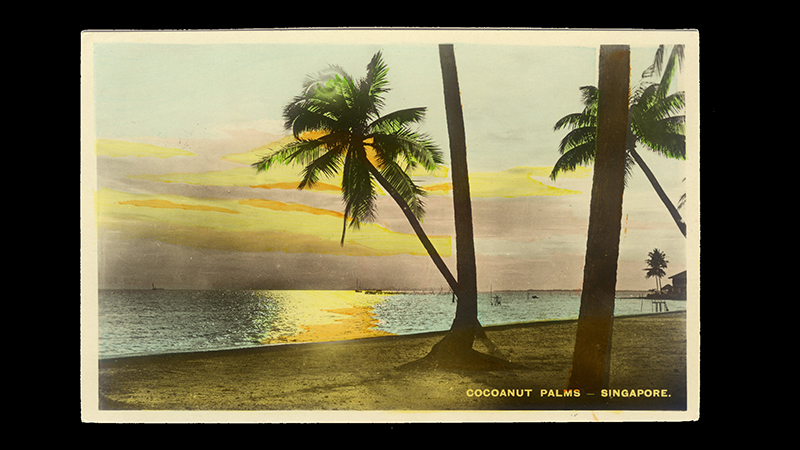THe NAture museum
An artist cannot exaggerate the sun (1883-1888)
Can’t see the forest for the trees (1840-1993)
Collection of the Coast Exploration Society, 1978-1988
Bats, Mangroves, Durians, Reservoirs, Tilapias & Floods : The Francis Leow Archives
All images by the ICZ
An artist cannot exaggerate the sun (1883-1888)
In 1883, Mount Krakatoa, in the Dutch East Indies, now Indonesia, erupted. The eruption was so massive that tsunamis were reported as far away as South Africa, and emissions from the volcano disrupted weather patterns for five years. The entire island of Krakatoa disappeared into ash, and the sky was darkened for several years afterwards.
This produced bizarre and spectacular sunsets all over the world: between 1883 and 1888, there was a slew of reports and sketches of red suns, purple twilights, and lavender sunsets.
In Singapore, the archives show that from 1883, postcards sent out by British occupants of Singapore rapidly began to focus on sunrises and sunsets. Due to the island’s proximity to the volcano and its sulphurous clouds, dusk and dawn turned green for several years, becoming a point of fascination for British inhabitants eager to participate in an international cataloguing of these optic mysteries.
Photographing Singapore sunsets became a hobby amongst settlers, who would send their shots and sketches to a Singapore press run by a Chinese printer, K.P.Hock, to be turned into postcards. These postcards would join a growing international collection of coloured sunsets. Sunset postcards from Singapore, often inscribed with vivid descriptions, became especially prized amongst collectors. During these years, Singapore’s “absinthe sun,” became a major attraction for Europeans passing through the city, who would hire local guides to take them to the coasts to catch a glimpse of the spectacle.











Copyright 2017, Institute of Critical Zoologists